I saw a post by Ted Patlen on a fly tying bulletin board. It was a simple post - a photo of a group of flies and a short statement stating his intention of tying the flies as close as possible to the way the originator tied the flies.
I have long been a student of classic fly tying - especially streamers and wet flies. I am not alone in that regard - as there has been an obvious resurgence in popularity of these flies as evidenced by numerous books, magazine articles, and web sites putting a new spin on a very old tale. While this is all good - I would hate to see these styles of flies go the way of greenheart rods and blueback trout - I have noticed that not all the tyers of these flies have a solid foundation in the history and original designs they are mimicking, and I'll admit it sometimes bugs me. To see a Carrie Stevens fly that is misproportioned with elements out of place, yet tied to surgical precision, irks me like a stone in my wading shoe.
I had those thoughts in mind when I saw a post by Ted Patlen on a fly tying bulletin board. It was a simple post - a photo of a group of flies and a short statement stating his intention of tying the flies as close as possible to the way the originator tied the flies. The selection was great - all the big names and styles were represented. The quality of tying was what you would expect from someone of Ted's caliber - well tied flies but tied for fishing in the way a commercial tier of the time would produce them.
His post stuck with me for awhile, before I got up the gumption to send him an email saying a) cool!, b) I appreciate his persistence in presenting the historical aspect of streamer fly tying, and c) I think what you are doing is worth sharing with a larger audience. In short, I asked if he would be interested in submitting his flies to GFF for an article showing in definitive fashion how these flies were offered by their originators - and how they should be tied today if people want to be historically accurate.
From Ted
I was asked to tie classic northeastern streamers/bucktails at the 2013 Swedish Fly Fair and chose these patterns to show a variety of styles besides the original look.
They are classics because of the problems solved by the original tyers. So why should I make them differently than they did? I am not going to improve upon the original ideas. Sure, I may adjust them a little to suit myself but not for presentation at a show. People deserve to see what the originals looked like, but also need to know why and how they wound up the way they did.
Were they tied for presentation as seen at most fly tying shows? Did it take 30 minutes to tie a fly? Were they highly polished, silk gloved entities we see across the internet and magazines? Of course not!!
How did Lew Oatman get those smooth tapered bodies? How did he apply the floss? Did he use single or multiple strands? Why did Carrie Stevens glue her wings together? Why is the head on Art Flick's Black Nosed Dace so huge when his dry flies are known for their sparseness and delicacy? Modder muddles are so different that people don't recognize the original.
My problem was to get my work to look very much like theirs, using similar methods, materials, and as many vintage hooks as I could. I found that if I functioned as a commercial tier would, fast with simple work habits, I got fairly accurate results.
All flies tied by Ted Patlen
|
|
|
Black GhostOriginator: Herb Welch Tail: Yellow Hackle Barbs |
|
|
|
|
Black Nosed DaceOriginator: Art Flick Tail: Red Wool Yarn, short |
|
|
|
|
Black and WhiteOriginator: Austin Hogan Tail: Red Hackle Barbs |
|
|
|
|
Brook TroutOriginator: Lew Oatman Tail: Orange hackle barbs |
|
|
|
|
BumblepuppyOriginator: Theodore Gordon Tail: Red Hackle Fibers |
|
|
|
|
Cain's River Silver DoctorOriginator: Fred N. Peet and C. Jim Pray Tail: Matched sections of barred woodduck |
|
|
|
|
Chief NeedahbehOriginator: Chief Needahbeh Head: Black |
|
|
|
|
Edson Dark Tiger BucktailOriginator: Bill Edson Head: Yellow |
|
|
|
|
Green BeautyOriginator: Carrie Stevens Head: Black (original with signature red band) |
|
|
|
|
Hewitt StreamerOriginator: Ed Hewitt Head: Black |
|
|
|
|
Jesse Wood StreamerOriginator: Jesse Wood Head: Black |
|
|
|
|
Ken LockwoodOriginator: Rube Cross Head: Black |
|
|
|
|
Morning GloryOriginator: Carrie Stevens Head: Black (original with signature red band) |
|
|
|
|
Muddler MinnowOriginator: Don Gapen Head: Black |
|
|
|
|
SuperviserOriginator: Joseph Stickney Head: Black |
|
|
|
|
York's KennebagoOriginator: Bert Quimby Head: Black |
|
- Log in to post comments



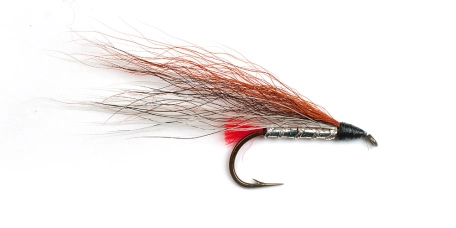






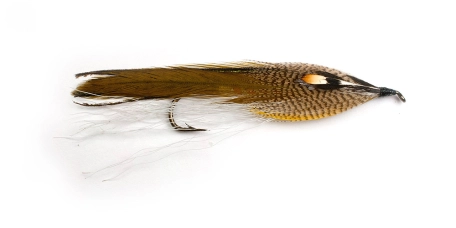
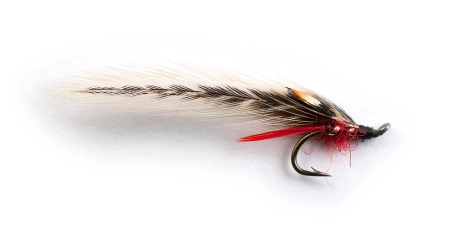


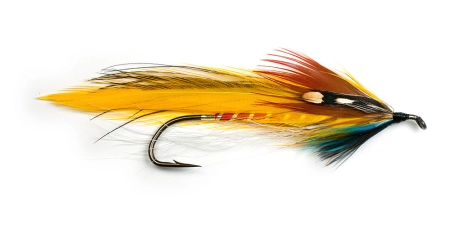

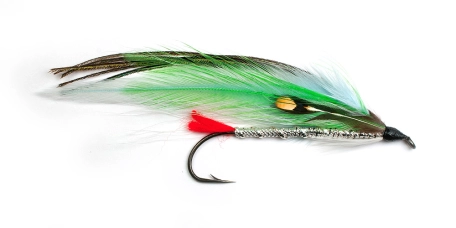



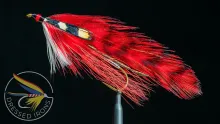




My tying skills are
My tying skills are so mediocre my muddlers have and always will be shaggy Gapenesque type monstrosities, that although not a whole lot to look at, LL salmon and Brook trout dont seem to mind here in the streamer capitol of the world my beloved Maine.
I recently acquired
I recently acquired several streamers...a "Polar Bear" pattern signed by Bert Quimby as well as some "York's Kennebago", "Chief Needahbeh" and "Bonbright Ross McKenney" some of these streamers are on cards which read Genuine "Irresistible" Lures, while others are simply in cello wrap pacs. They came with several wet fly packets of 12 #16 flies made in Czechoslovkia circa 1950's. Any comments regarding these flies will be appreciated.
Nothing like todays stuff
timo,
yeah the original muddler is nothing like todays stuff...people have adapted them for themselves and different applications that the original was intended for. the muddler was at first tied to sink as fast as possible and imitate a wide body sculpin. the original's wide sparse collar and heavy hooks represents this fish well.
florian...yes many of those very long shanked hooks were for trolling or just hanging off the end of a canoe when anchored...these flies are just examples of how some of the original flies were tied mainly to imitate smelt.
VERY well done Bob!
VERY well done Bob!
Great looking flies
Great looking flies Ted and good approach to tying them. I did a similar thing for a muddler article couple years ago tying one like the modern standard and one more closely to original. I think that pattern is probably the best example of what you are talking about.
BR,
Timo
Nice ones :)
Nice ones :)
For a while the grey ghost was a standard I tied and fished, but did away with it, From a catching point of view a downsized clouser (size 8; white arctic fox,a hint of flash and grey squirrel) is better and the tying is by far not as time consuming.
In my understanding quite a few of these patterns, the one on the very long shanked hooks, are more for trolling from a canoe than for casting.
TL
Florian
fave flies
Got to love these old streamer patterns, many from Maine! Like Cain's and all are nicely tied.